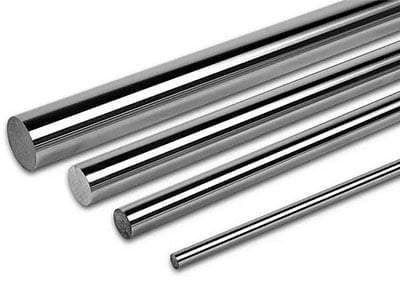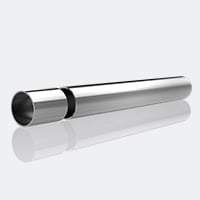Introduction

316 stainless steel is renowned for its exceptional corrosion resistance, high strength, and versatility, making it a preferred material across a wide range of industries. From medical devices to marine equipment, this alloy offers superior performance in challenging environments. In this blog, we’ll explore the versatility of 316 stainless steel and its applications in various industries, highlighting its unique properties, benefits, and common uses.
Properties of 316 Stainless Steel
Before delving into its applications, let’s first understand the key properties that make 316 stainless steel such a versatile material:
- Corrosion Resistance: 316 stainless steel exhibits excellent resistance to corrosion, particularly in harsh environments with exposure to chlorides and acids.
- High Temperature Resistance: It maintains its strength and integrity at elevated temperatures, making it suitable for high-temperature applications.
- Strength and Durability: With its high tensile strength and durability, 316 stainless steel is capable of withstanding heavy loads and mechanical stresses.
- Hygienic Properties: This alloy is non-reactive and easy to clean, making it ideal for applications requiring strict hygiene standards, such as food processing and medical equipment.
- Aesthetic Appeal: 316 stainless steel has a smooth, polished finish that enhances its aesthetic appeal, making it suitable for decorative and architectural purposes.
Applications of 316 Stainless Steel in Various Industries
Medical Industry
316 stainless steel is widely used in the medical industry for surgical instruments, implants, and equipment due to its biocompatibility, corrosion resistance, and sterilizability. Its inert nature and resistance to body fluids make it an ideal choice for medical devices that come into contact with the human body.In addition to its use in the medical industry, 316 stainless steel is also employed in the manufacture of pharmaceutical processing equipment, laboratory benches, and other tools and apparatus used in clinical and research settings. Its durability, ease of maintenance, and ability to withstand harsh cleaning and sterilization processes further contribute to its suitability for these applications.
Food and Beverage Industry
In the food and beverage industry, 316 stainless steel is preferred for processing equipment, storage tanks, and piping systems. Its corrosion resistance and hygienic properties ensure the integrity of food products and prevent contamination, maintaining high standards of safety and quality.
Marine and Coastal Engineering
The marine and coastal engineering sectors rely heavily on 316 stainless steel for marine hardware, boat fittings, and offshore structures. Its resistance to corrosion in seawater and harsh marine environments makes it indispensable for applications exposed to saltwater, waves, and atmospheric conditions.
Chemical and Petrochemical Industry
In chemical processing plants and petrochemical refineries, 316 stainless steel is used for storage tanks, reactors, and piping systems. Its resistance to corrosive chemicals and high temperatures ensures the safe handling and storage of hazardous substances, minimizing the risk of leaks or contamination.
Architecture and Construction
In architectural and construction applications, 316 stainless steel is valued for its aesthetic appeal, durability, and low maintenance requirements. It is commonly used for building facades, structural elements, handrails, and decorative features, adding a modern and stylish touch to buildings and structures.
Comparison of 316 Stainless Steel with Other Alloys

To illustrate the advantages of 316 stainless steel over other alloys, let’s compare its properties with those of commonly used materials:
| Property | 316 Stainless Steel | 304 Stainless Steel | Carbon Steel |
|---|---|---|---|
| Corrosion Resistance | Excellent | Good | Poor |
| Strength | High | High | Moderate |
| Temperature Resistance | High | High | Low |
| Hygienic Properties | Excellent | Excellent | Poor |
| Aesthetic Appeal | Excellent | Excellent | Moderate |
Conclusion
In conclusion, 316 stainless steel stands out as a versatile and indispensable material in various industries, thanks to its exceptional properties and performance. From medical devices to marine equipment, this alloy offers unmatched corrosion resistance, strength, and hygienic properties, making it the material of choice for critical applications. By exploring its versatility and understanding its unique advantages, industries can harness the full potential of 316 stainless steel to achieve superior results in their projects.
FAQ
Is 316 stainless steel suitable for outdoor applications?
Yes, 316 stainless steel is highly resistant to corrosion and is therefore suitable for outdoor applications exposed to harsh environmental conditions, such as marine environments, coastal areas, and industrial settings.
Can 316 stainless steel be welded?
Yes, 316 stainless steel can be welded using common welding techniques such as gas tungsten arc welding (GTAW), gas metal arc welding (GMAW), and shielded metal arc welding (SMAW). However, proper welding procedures and techniques should be followed to ensure the integrity of the welds and minimize the risk of corrosion.
How does the cost of 316 stainless steel compare to other materials?
316 stainless steel is generally more expensive than carbon steel but is comparable in cost to other corrosion-resistant alloys such as 304 stainless steel. While the initial cost may be higher, the long-term benefits of its durability and resistance to corrosion often outweigh the upfront investment.
Is 316 stainless steel magnetic?
While 316 stainless steel is generally considered non-magnetic in its annealed state (heat-treated for optimal corrosion resistance), it can become slightly magnetic after significant cold working or when subjected to certain manufacturing processes. However, the magnetic properties of 316 stainless steel are typically weaker compared to magnetic alloys like ferritic or martensitic stainless steels.
What are the limitations of using 316 stainless steel?
Despite its many advantages, 316 stainless steel does have some limitations. One limitation is its relatively high cost compared to carbon steel and some other stainless steel grades, which may impact its suitability for certain budget-conscious applications. Additionally, while highly corrosion-resistant, 316 stainless steel may still experience localized corrosion under extreme conditions, such as prolonged exposure to high chloride concentrations or acidic environments. Regular maintenance and proper material selection are essential for mitigating these risks.
